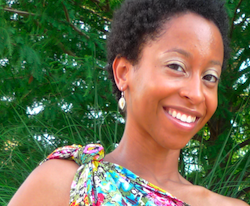
As we all know, February is Black History Month. It’s a month where we honor those who have made an impact on American culture for equal rights, those who have invented, those who have a helped others and those who have inspired everyone to be the best they can be, not only as a person of color but as a human. Last year for Black History Month, I started an online series called 28 Days Diversity where I would feature someone new everyday during the month of February for just being awesome in their own right. Even though it’s black history month, the goal for 28 Days of Diversity is to feature not just African-Americans but other minorities in the web/tech space. Also note that 28 Days of Diversity is not a popularity contest or an influencer list but a list of thought leaders in the social web sector, including entrepreneurs, bloggers, conference organizers, IT professionals and friends not ranked in any particular order who I have either met in person or followed online. Each post will include a picture, bio, two links from the selected person and this paragraph.
For 2011 I wanted to not just feature individuals but also address a topic that affects everyone. For 28 Days of Diversity 2011 each post/person will answer the question “How can we use technology to close the digital divide?” So for the next 28 days, come back to visit SocialWayne.com/tag/28daysofdiversity and 28daysofdiversity.com to see who’s on the list. For day 4, I would like to introduce to some and present to others:
Kristen Nicole
Twitter: @KristenNicole2
Website/Blog: kristennicole.com
Kristen Nicole is the News Desk Editor at SiliconANGLE, a digital publication focused on the intersection of computer science and social science. She got her start with 606tech, a Chicago blog she dedicated to the social media space. She went on to become the first employee and Field Editor at Mashable. Kristen Nicole has also contributed to other publications, from VentureBeat to the The Industry Standard. Her work has been syndicated across a number of media outlets, including Yahoo! News, The New York Times, and MSNBC.
Kristen Nicole’s latest accomplishment has been co-authoring The Twitter Survival Guide, and she’s currently completing her second book, Tweetie Girl.
How can we use technology to close the digital divide?
The democratization of information has certainly lessened the digital divide gap when you talk about web access and devices. Laptops have become less expensive, while smartphones have delivered mini computers to a broad range of users. Young black adults in particular are helping to close the digital divide, with eMarketer reporting that about 64% of the community now has internet access. Females in particular are utilizing the web for a myriad of purposes, namely participating in online conversations, which can tap into community cohesiveness to collectively overcome the digital divide.
But the new digital divide is emerging on the web itself, determined in large part by the way the Internet is utilized, how information is accessed on the web, and the means by which that information access is provided. Social networks have contributed to this new digital divide, having a distinct correlation between its user bases and race. Over the past few years, whites have migrated to Facebook, deeming MySpace too “ghetto,” as its vast popularity extended to blacks and latinos.
The technology we now need to focus on includes software to optimize the web’s use. Now that the majority of the U.S. has internet access, the digital divide means something different all together. And we’re really talking about mobile devices a great deal here, as they’re the devices most commonly used for regular web access by minorities on the “wrong side” of the digital divide.
USA Today uses the example of filling out a job application online, using a mobile device. It’s not very easy, and many related websites have not fully optimized for mobile usage. A mobile website may be a primary channel for someone looking to advance themselves socially and economically.
The social tiers of the web are replicating offline structures, so further closing the digital divide means focusing on the ways in which Internet access is used. USA Today goes on to note that many blacks and latinos are using web forums like Twitter for entertainment purposes, largely consuming content, though a great deal of content creation is taking place as well. This is reiterated in marketing methods, which have long since recognized the patterns of minority demographics on mobile devices.
Ensuring that useful content is available and encouraged through web access is a big sticking point for me. I personally find the internet to be an advantage for anyone looking to grow their knowledge base on any subject, whether it’s studying for an exam, preparing a meal, repairing a broken object or merely learning more about the history of their neighborhood. All these things provide additional perspectives on a user’s life experiences, and can take them across the digital divide at any point in time. In essence, the web can help us all help ourselves, when used properly.
Mobile optimization has some promising advances with emerging marketplaces, like the iTunes App Store and Android Market, delivering software that’s created with a purpose. As apps and mobile devices become more integrated with consumer needs, the opportunities around individualized improvement will also become easier to recognize, and more accessible, just as hardware has become in the past decade. Who knows what the next iteration of the digital divide will be, but I’m hopeful that access to the world’s largest knowledge base can help us overcome it.
You can follow the status of 28 Days of Diversity 2011 on http://28daysofdiversity.com and https://socialwayne.com/category/28-days-of-diversity/
